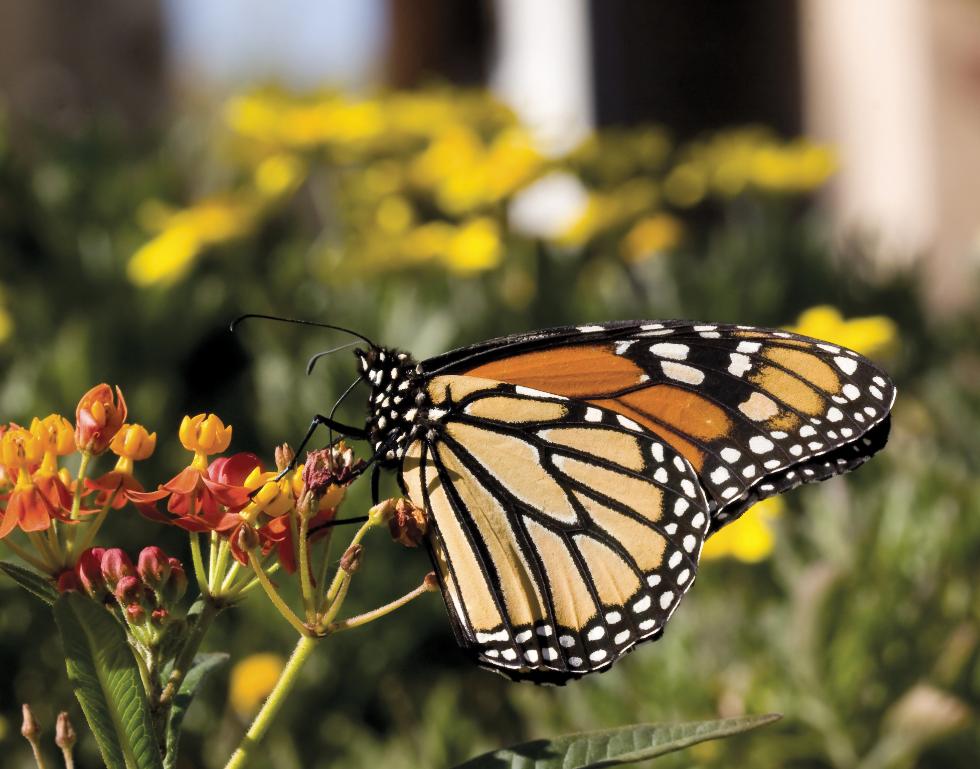How To Be A Monarch Mama
By Dawn Williams, Senior News Associate Publisher

If nature and wildlife are part of your lifestyle, you can celebrate Mother's Day by helping monarch butterfly populations to grow. Simply planting milkweed in your garden or open acreage is all it takes to help save this dwindling species.
Kay MacNeil, Milkweed for Monarchs Chairman for Garden Clubs of Illinois, is an advocate for monarchs, whose population she says has dropped 90 percent. MacNeil has several informational videos on YouTube and is coordinating outreach and education efforts in Illinois. In her role as chairman for GCI's effort, she's working to let fellow gardeners and nature lovers know abouth the plight of the monarchs, and to help GCI reach it's goal of distributing 10,000 packets of milkweed seed samples (details can be found in this article).
According to the World Wildlife Fund, which also advocates for monarchs, the butterflies are losing their homes in our area due to land conversion and the use of herbicides. Climate change is also a factor; monarchs wait for cold temperatures before beginning their annual migrations. As a result, butterfly numbers have been declining for decades.
But MacNeil says every one of us can help reverse this sad situation. Planting milkweed is a great start.
Milkweed is the only plant on which monarchs will lay their eggs, and it is the only plant provides food for monarch caterpillars. Three primary species of Asclepias (milkweed) are needed in the Midwest, MacNeil says.
- Asclepias incarnata, also known as swamp milkweed, offers lovely rose-pink flowers, and grows well in very moist areas. A newer cultivar, 'Ice Ballet,' blooms white in mid- to late summer, but thrives in drier soils. Both are perennials, standing about 3 feet tall when mature.
- Asclepias tuberosa is better known as butterfly weed. As a native wildflower, it is very easy to grown, cold hardy, and thrives even in poor, dry soil. Beautiful orange flowers bloom from June through August, and mature plants stand only 2 feet tall, making them suitable for border areas in perennial gardens. Butterfly weed not only provides shelter and food for caterpillars, but the blooms also provide nectar for adult monarchs.
- Asclepias syriaca, or common milkweed, is best planted in wild areas, as it is highly aggressive. The 4-foot tall plant resembles a rubber tree plant that produces fragrant pink umbels. Although not suitable for the home garden, it is highly desirable in open areas such as meadows, beside roadways, and in rural areas.
Getting started is easy. You can purchase seeds or potted plants online or from your local nursery or garden center. And if you'd like to try out milkweed without a large investment, MacNeil is coordinating the Garden Clubs of Illinois seed sampler project. You'll receive samples of three types of milkweed along with lots of information for only $2 and a self-addressed, stamped business-size envelope. Send it to Kay MacNeil, 689 Golf Club Ln., Frankfort, IL 60423.
Once you've provided a fertile environment for monarchs, let the parenting begin!
"The female curls her abdomen under the edge of the leaf and tacks a whitish egg (the size of a period on a typewritten page) under the leaf. You can see it," MacNeil said. Several days later, the egg hatches into a caterpillar, about the size of a comma. Each female lays one egg per plant so there is enough food for the caterpillars.
When you've found a caterpillar, place it in a flat-bottomed container with plenty of space. An old terrarium works well. Cover with screening or netting and secure with a rubber band. Place milkweed cuttings in a flower tube, and place the tube in a small glass to keep it upright. Be sure to provide plenty of leaves, especially before nightfall when caterpillars are often active, and rinse the leaves before inserting the stalk into the flower tube. Take advantage of feeding time to wipe out the bottom of the container every time you provide fresh cuttings. You can also place a random stick in the terrarium as an anchor from which the chrysalis can hang, but don't be surprised if you find it hanging on the screening or elsewhere.
MacNeil says to provide fresh milkweed until the caterpillar stops eating and makes its chrysalis. Once the chrysalis is formed, remove the milkweed and be patient. Butterflies usually emerge in the morning hours. The monarch will need a bit of time before its wings are unfolded and it's ready to fly. A lot of fluttering is an indication that your "baby" is ready to be launched. Wait for the warmth of midday, MacNeil advises.
"Go outside," she said. "Stick your hand in the jar and the butterfly climbs up. Sometimes it sits for a bit, sometimes it just flies off. Aren't you proud? Your butterfly's been released, so wash out your container with soap and water and a little Clorox. Rinse and dry well. You're ready to try again."
If you'd like to take further steps to help save the monarchs, MacNeil is offering bulk quantities of sample packets. You can distribute these pretty GCI packets at plant sales and other spring events, or give them to friends and family members who enjoy gardening. MacNeil can provide information on additional ways you or your group can promote this cause. Reach her by phone at 815-469-1294, or via email to kaymac60423@yahoo.com.